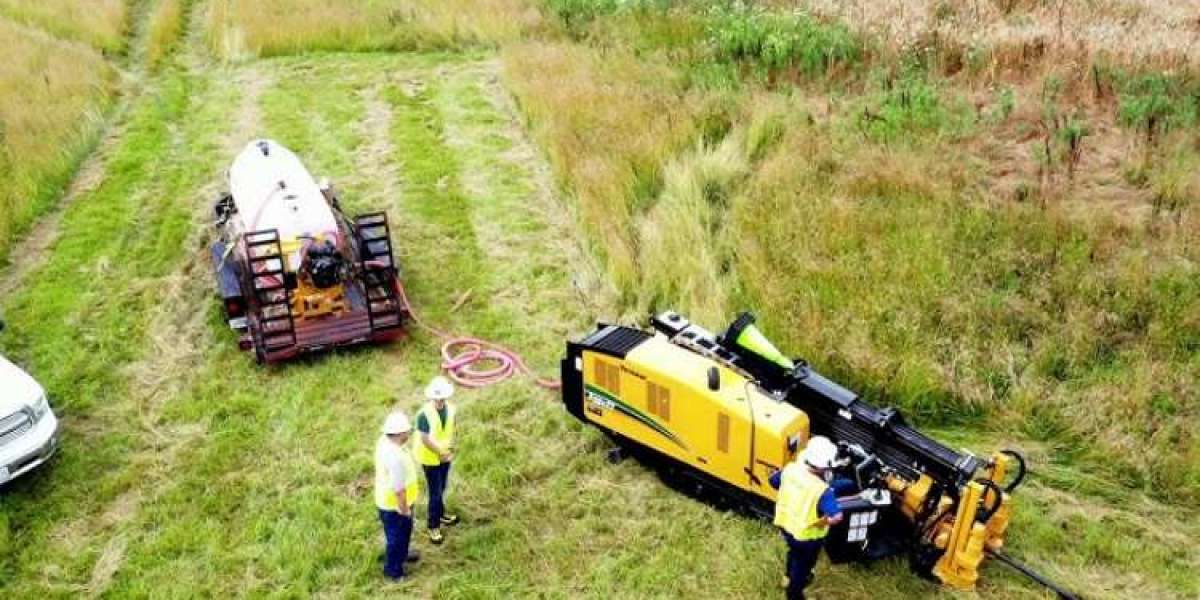In today’s rapidly evolving world of construction and infrastructure development, the demand for efficient, minimally invasive, and environmentally friendly methods of laying utilities underground has never been higher. One of the leading technologies used to meet these requirements is directional boring, also known as horizontal directional drilling (HDD). This article explores what directional boring services entail, their advantages, and how they are transforming underground construction practices.
What is Directional Boring?
Directional boring is a trenchless method of installing underground pipelines, cables, and conduits in a way that minimizes disruption to the surrounding area. This technique involves the use of specialized equipment to drill horizontally through the ground, providing a path for the utilities to be pulled through.
The process is typically divided into three main stages:
- Pilot Hole Drilling: A pilot bore is drilled along a predetermined path using a steerable drill head. Operators control the direction and depth of the bore using advanced tracking technology.
- Enlarging the Borehole: Once the pilot hole is complete, the borehole is enlarged using a reamer to accommodate the utility line or conduit.
- Pullback of the Utility: The final step involves pulling the utility line through the enlarged hole, completing the installation.
Applications of Directional Boring
Directional boring services are essential for a variety of applications, including:
- Water and Sewer Lines: Installing municipal water and sewer infrastructure.
- Electric and Telecommunications: Laying cables for power and communication systems.
- Gas and Oil Pipelines: Constructing energy transmission networks.
- Environmental and Monitoring Wells: Establishing wells for groundwater monitoring or environmental protection.
These applications span numerous industries, from urban construction projects to remote energy installations, making directional boring a versatile and indispensable tool.
Advantages of Directional Boring
The popularity of directional boring services is attributed to several key advantages:
Minimized Surface Disruption: Unlike traditional open-trench methods, directional boring does not require large-scale excavation. This is particularly beneficial when working beneath roads, rivers, buildings, or other sensitive areas.
Environmental Benefits: By limiting the need for extensive digging, directional boring minimizes environmental impact and preserves natural habitats. It also reduces the potential for soil erosion and contamination.
Cost-Effectiveness: Although the initial cost of HDD equipment can be high, the overall cost savings can be substantial. The reduction in labor, restoration work, and project timelines often results in significant budget efficiency.
Safety: Directional boring is safer for workers and the surrounding community since there is less exposure to heavy machinery and open trenches.
Precision and Versatility: HDD technology allows for precise installations, even in congested urban areas or rough terrain. Advanced equipment and tracking systems enable operators to navigate around obstacles and reach otherwise inaccessible locations.
The Equipment and Technology Behind Directional Boring
Directional boring relies on advanced technology and heavy machinery. The primary equipment includes:
- Directional Drilling Rig: The core machine used to perform the boring. These rigs vary in size, depending on the project scope and soil conditions.
- Drill Head and Steering Tool: Equipped with sensors, these tools help guide the drill along the correct path.
- Drilling Fluids: A mixture of water, bentonite, and other additives is used to cool the drill head, remove cuttings, and stabilize the borehole.
- Tracking and Monitoring Systems: Sophisticated guidance systems allow operators to monitor and adjust the bore's trajectory in real time.
The choice of equipment and methods depends on factors such as soil type, bore length, and the diameter of the utility being installed.
Challenges and Considerations
Despite its many advantages, directional boring is not without challenges. Soil conditions, for example, can greatly influence the feasibility and cost of a project. Rocky or unstable ground may require specialized techniques and equipment. Additionally, thorough planning and surveying are essential to avoid hitting existing underground utilities or causing unintended environmental disturbances.
Proper site analysis, risk assessment, and contingency planning are critical components of a successful directional boring project. This is why hiring experienced professionals who understand the complexities of HDD is crucial.
The Future of Directional Boring
As urban areas continue to grow and the demand for underground infrastructure rises, the importance of efficient, non-invasive installation methods like directional boring will only increase. Technological advancements are driving the industry forward, with improvements in drilling accuracy, monitoring systems, and environmentally friendly practices.
Furthermore, as sustainability becomes a greater priority in construction, directional boring services will play a pivotal role in building resilient and eco-friendly infrastructure.
Conclusion
Directional boring services Los Angeles are revolutionizing the way we install underground utilities, offering a smarter, safer, and more sustainable alternative to traditional excavation methods. Whether it’s laying fiber optic cables under a bustling city street or installing a gas line through challenging terrain, directional boring provides a reliable and efficient solution for modern infrastructure needs.
As the technology continues to advance, the possibilities for trenchless construction will expand, shaping the future of construction and paving the way for innovative approaches to infrastructure development.








